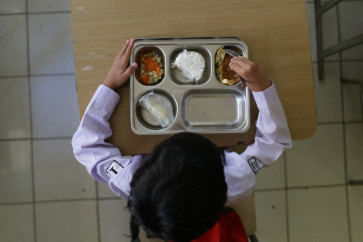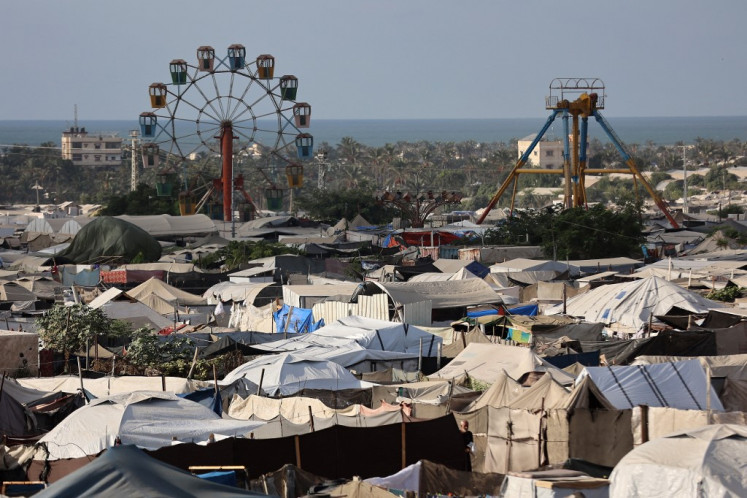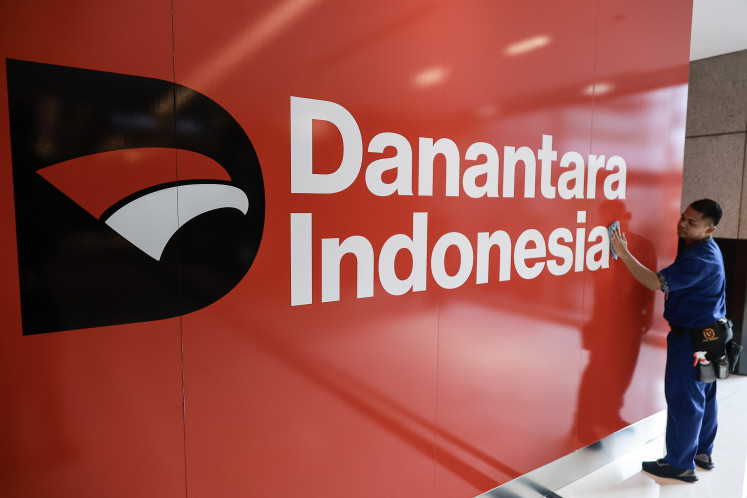Popular Reads
Top Results
Can't find what you're looking for?
View all search resultsPopular Reads
Top Results
Can't find what you're looking for?
View all search resultsRatna Sulastin: The constant gardener
Ratna Sulastin (right): (JP/Harry Bhaskara)A series of failures growing flowers in her garden did not deter Ratna Sulastin
Change text size
Gift Premium Articles
to Anyone
Ratna Sulastin (right): (JP/Harry Bhaskara)
A series of failures growing flowers in her garden did not deter Ratna Sulastin.
'Every time I bought a beautiful tropical tree from the nursery and planted it in my garden, it withered,' said the Indonesian-born Australian housewife about her garden in Perth, Western Australia.
Instead of giving up, her curiosity grew.
One day she bumped into a planting demonstration at Perth's famous Kings Park, a 480-hectare city garden expanse whose beauty is the envy of every plant lover.
'There, I met volunteers and master gardeners. And before long I was enrolled in a 6-month training program, twice a week,' Ratna said of her first encounter with the government-run Kings Park 13 years ago.
Juggling her time between Murdoch University campus, where she was studying Asian history, and Kings Park, she managed to finish the course.
And she hasn't looked back.
Now she is part and parcel of the city with a top-notch garden, becoming a member of Kings Park Master Gardeners, a volunteer group that dedicated itself to the life of the park.
She went through various committees in the group, including doing administrative jobs, before becoming president from 2009 to 2011.
'I learned something about soil during my school years back in Indonesia. And yet I was astounded during my training at King's Park. There was so much more to learn, particularly about the rich variety of soil,' said Ratna, who has lived in Perth for more than 20 years.
'Unlike Indonesia, the land of which is mostly volcanic, the land in West Australia, particularly the Swan River plain that used to be a coastal plain, has no soil. There is only sand,' she said referring to the major river flowing west through the city of Perth to the Indian Ocean.
'Most land in Western Australia is old land, devoid of forests, which is poor in substances like minerals,' she said of Australia's biggest state, which is the size of five Sumatra islands.
'Plants have gone through evolution for thousands of years in this old Australian earth. It turns out that not every plant we see can grow in our garden. The more I learned, the more confused I became. But it was really fascinating,' said the wife of Dr. Ian Chalmers, an Indonesianist at the Curtin University of Technology.
Ratna's perseverance to learn about Western Australian plants has paid off as her beautiful home garden attests.
Curiously, the way she tends to her garden defies common sense.
'Today, I rarely water my plants. I just water them when I plant them. Afterward I leave it to Mother Nature. The trick is to pick the right plants to grow,' she said.
Giving advice on what plants to grow to Perth residents is part of her work as a volunteer.
Soil characteristics differ from suburb to suburb in this coastal city.
'Plants that grow in Bassendean in the northeastern part of Perth can't grow in Cottlesloe in the western part of the city,' she said, citing an example.
'Bassendean soil is acidic while that in Cottlesloe is alkaline,' she said.
'Banksia, an Australian wildflower that is a popular garden plant, can grow in Fremantle but not in Bull Creek,' she said referring to two suburbs 15-kilometers apart.
Even one suburb, like Bull Creek where Ratna lives, can have two different types of soil, she went on.
Plants have evolved in Australia and have adapted to different conditions in different locations, Ratna said.
Now, there are 18 main vegetation complexes in and around Perth stretching from Two Rocks town in northwest Perth to Singleton town in the southwest.
Clients asking for advice, either by calling the volunteers, emailing or in face to face meetings at an exhibition in Kings Park, may come from one of these complexes.
This does not sound like an easy task as volunteers must master all the vegetation in the complexes by heart.
'In Western Australia, particularly in Perth's coastal plain, there is no soil but sand. Soil can only be found 40 km from Fremantle. Even this is not soil but sand dunes that are silicon sand obtained after thousands of years of being washed by water,' Ratna said, referring to the coastal suburb.
'There are no mineral or organic substances on the plain. It doesn't mean we can't grow anything on it though. It is easier to grow something on it compared to clay soil. With compost, anything can grow,' she said.
Ratna is one of about 40 master gardener volunteers in Kings Park. Each can easily clock up between 250 to 400 hours of work per year.
'As volunteers, we feel really appreciated by the park,' she said.










